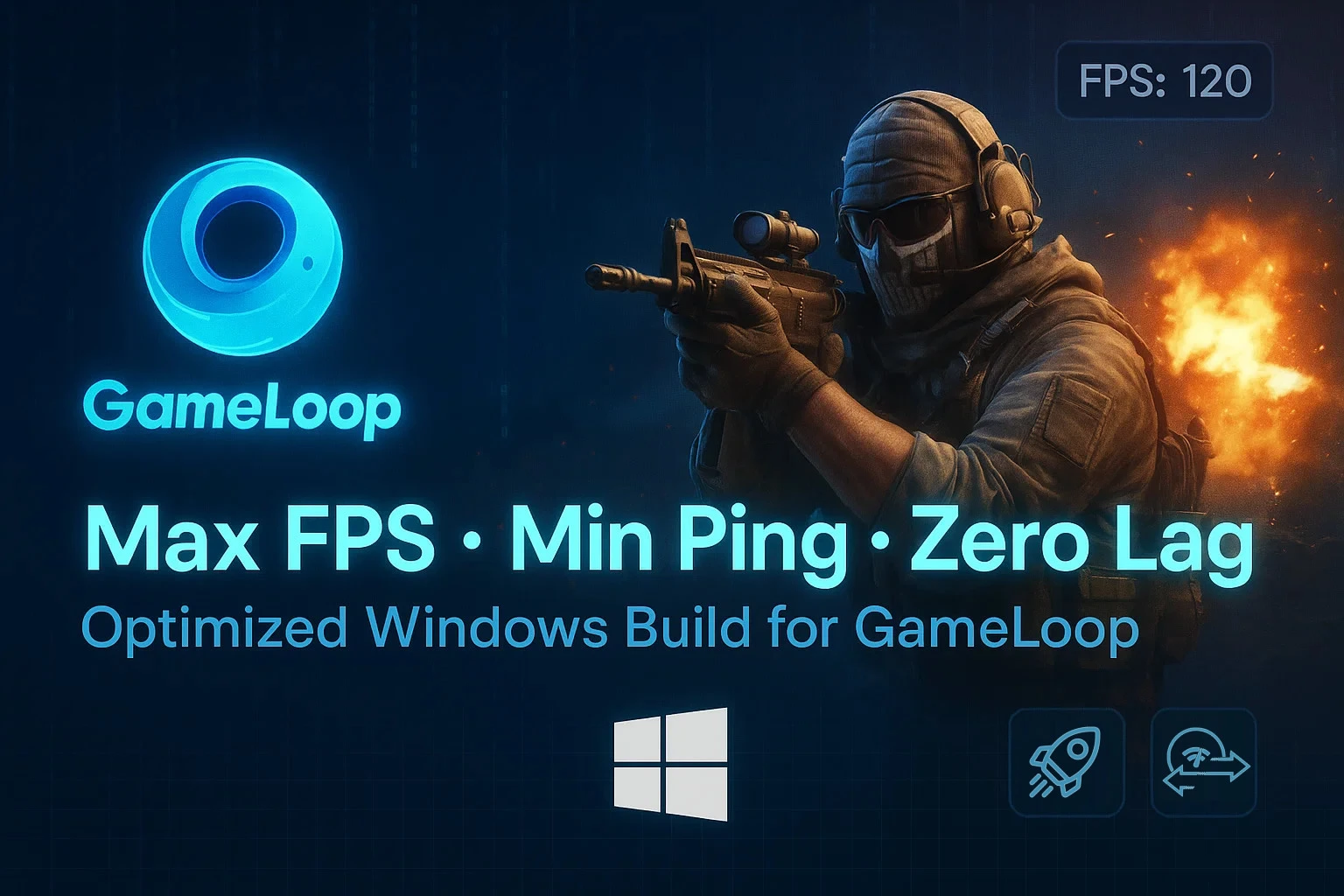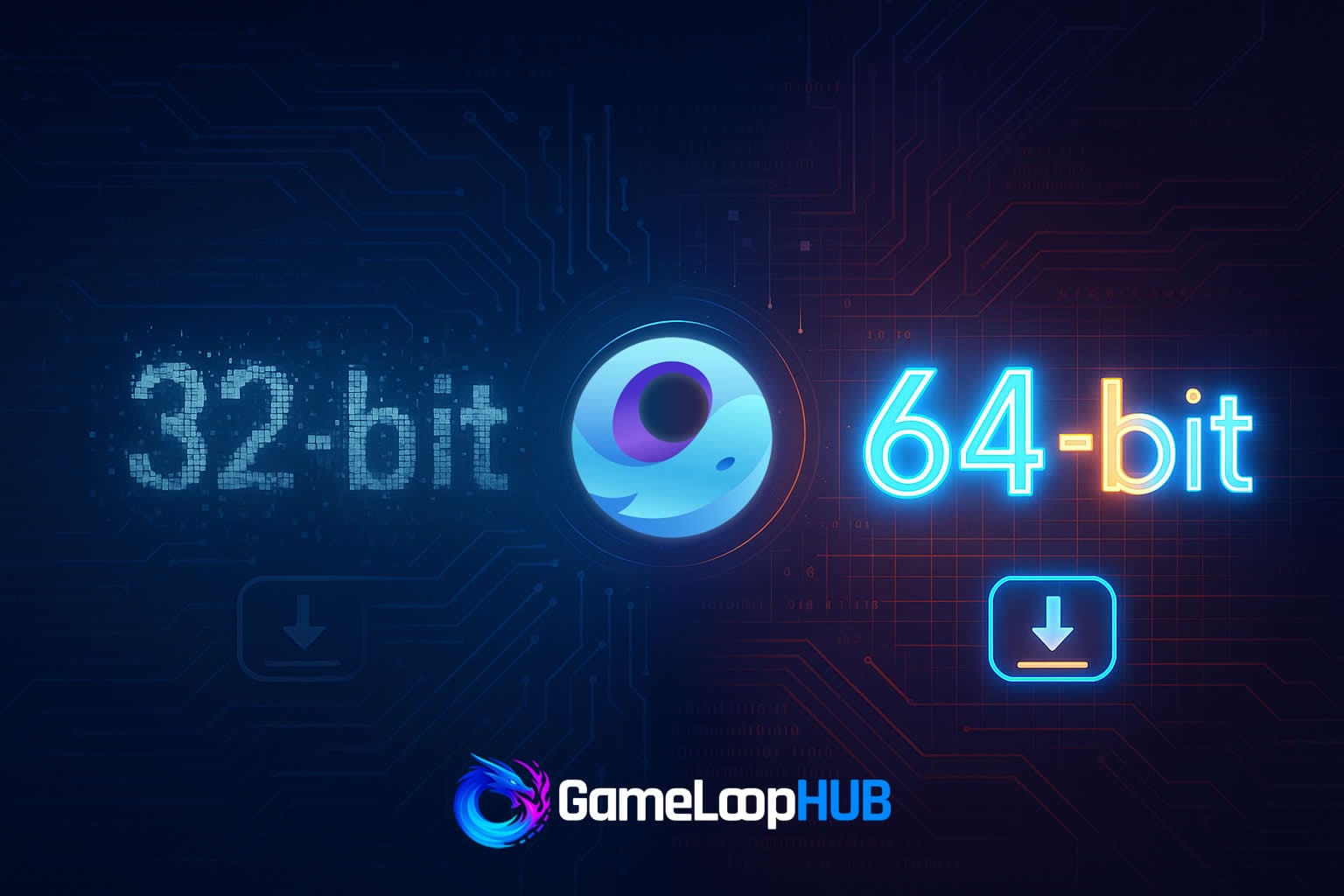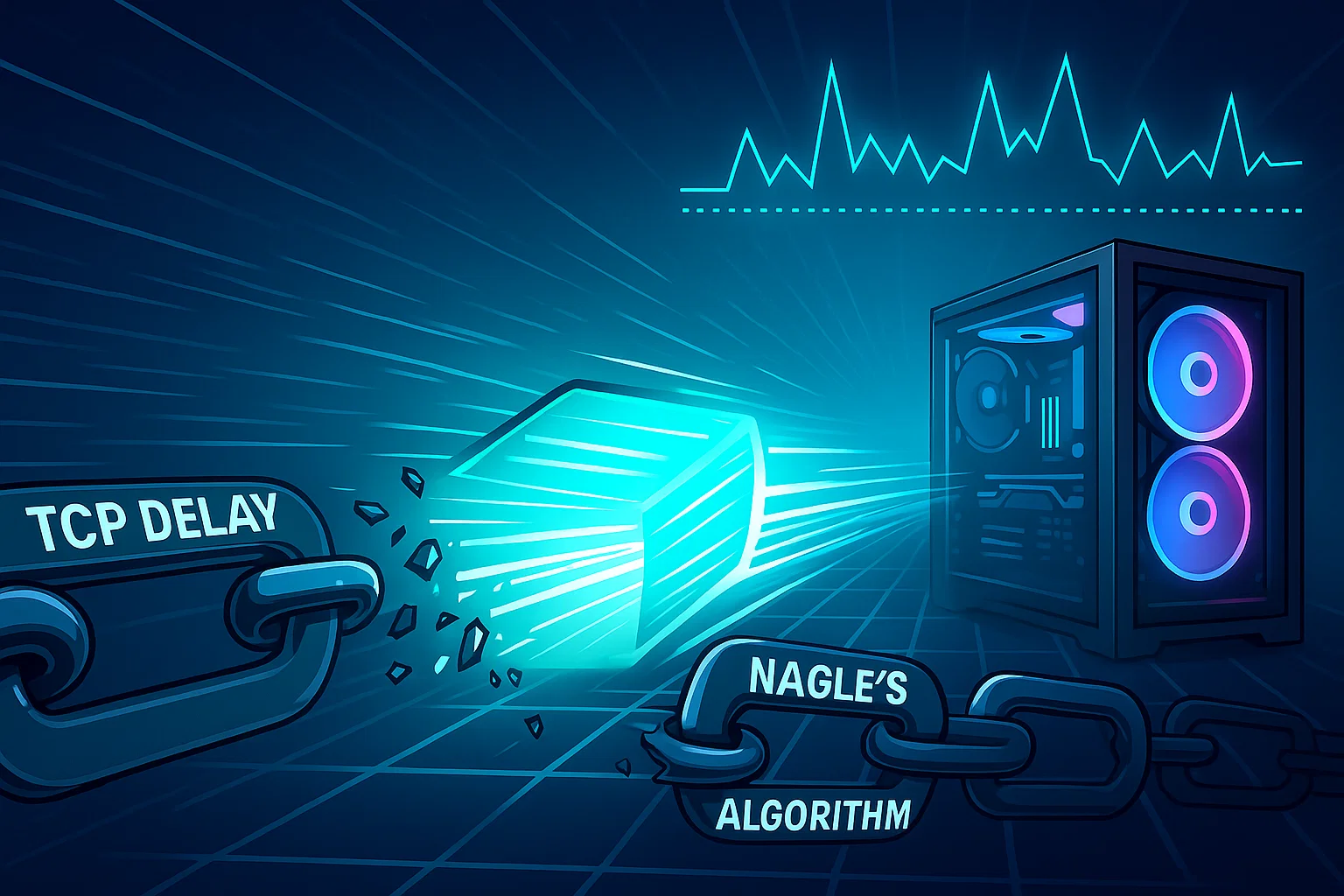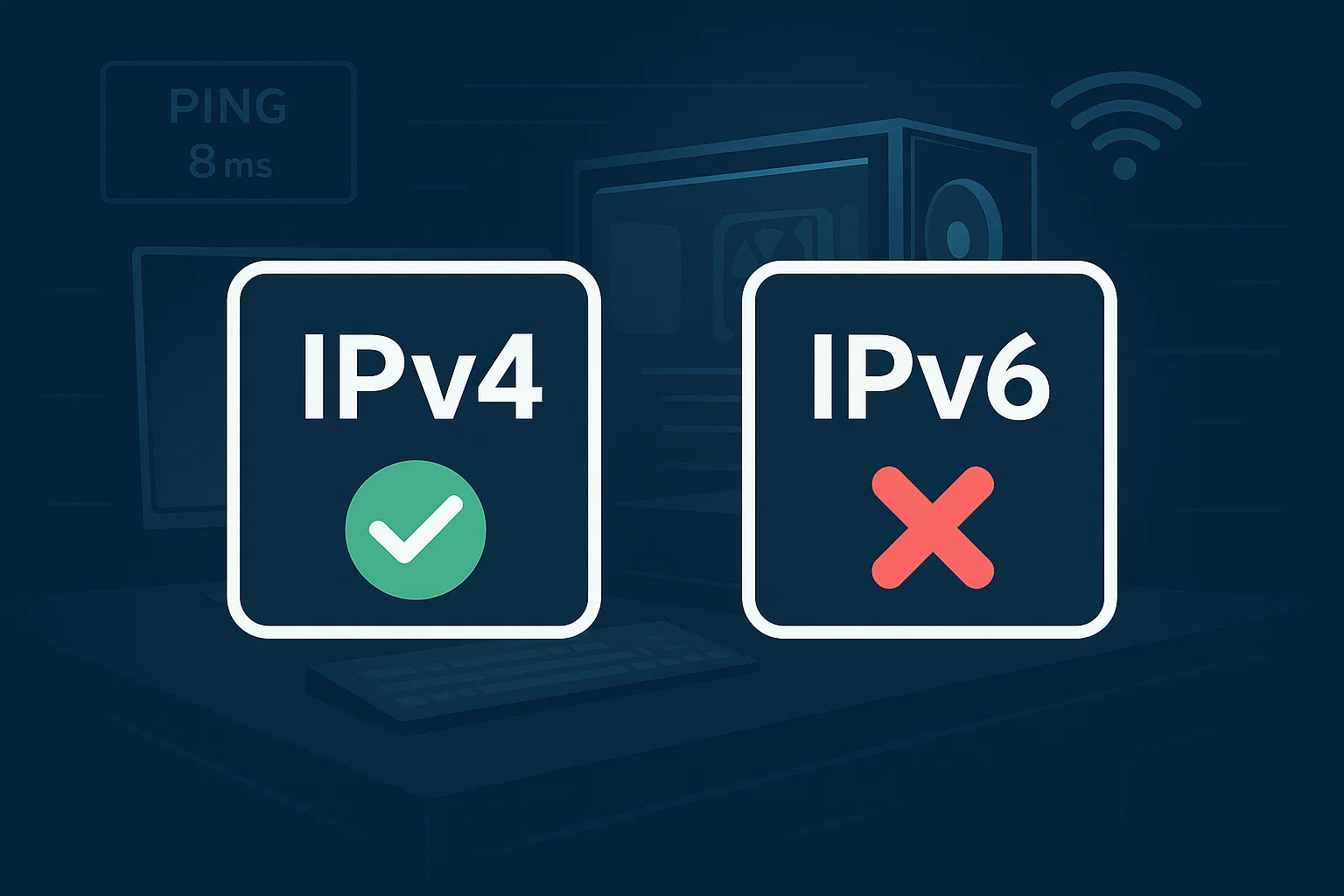How to Fix GameLoop Lag & Boost FPS – Full Optimization Guide
This guide is specifically designed for gamers who want to play mobile FPS titles — such as Call of Duty: Mobile, PUBG Mobile, and similar competitive games — on their PC using the GameLoop emulator.
Our goal isn’t just to launch the game. It’s to maximize frame rate (FPS), minimize latency (ping), and ensure rock-solid system stability throughout every match.
When properly configured, GameLoop can deliver an impressive emulation experience. However, default Windows settings, background tasks, security features, automatic updates, and even network and memory configurations can create serious performance bottlenecks — especially for high-stakes gaming.
💡 You don’t need to apply every single optimization. Many of these tweaks can be applied individually on your existing system. But for the best possible results, we strongly recommend a fresh Windows installation optimized exclusively for GameLoop.
Whether you’re a competitive player or just tired of lag and stuttering, this guide walks you through every step — using plain language, no technical jargon, and screenshots where needed. Anyone can follow it.
Getting Started: Preparation and Required Files
1. Downloading a Reliable Windows 10 ISO
This guide recommends using Windows 10 Pro 21H2 (Build 19044.1288). This version offers the best compatibility, stability, and performance when used with GameLoop.
Newer versions (such as 22H2 and beyond) introduce additional background services, security layers, and virtualization-based security (VBS), all of which can significantly reduce overall system performance.
2. Configuring BIOS Settings
Before installation, you need to enter your system’s BIOS/UEFI settings to configure essential options.
Settings like Secure Boot and Fast Boot can prevent proper installation and affect performance features.
Also, Virtualization (Intel VT / AMD-V) must be enabled, as GameLoop’s emulation engine (aow_exe) relies heavily on virtualization for optimal performance.
3. Performing a Clean Windows 10 Installation
The most effective way to build an optimized system for GameLoop is to perform a clean and fresh Windows installation.
This process removes any leftover drivers, unnecessary background services, or system clutter that may negatively affect performance.
Post-Installation Essentials
4. First Boot Configuration
Before connecting to the internet, it’s critical to permanently disable certain Windows services to prevent the system from being overloaded with unnecessary background processes.
Services like Windows Defender, SmartScreen, and User Account Control (UAC) can cause performance loss, stuttering, and FPS drops during gameplay.
5. Installing Only Essential Drivers
Before installation, you need to enter your system’s BIOS/UEFI settings to configure essential options.
Settings like Secure Boot and Fast Boot can prevent proper installation and affect performance features.
Also, Virtualization (Intel VT / AMD-V) must be enabled, as GameLoop’s emulation engine (aow_exe) relies heavily on virtualization for optimal performance.
Additional Performance & Stability Tweaks
6. Moving Critical Folders to RAMDisk
GameLoop frequently reads from and writes to certain folders. By relocating these to a virtual disk on RAM, we reduce access latency to near zero — resulting in significantly faster map loads and smoother in-game transitions.
7. Manually Setting the Paging File (Virtual Memory)
When physical RAM runs low, Windows uses disk space as temporary memory. By manually adjusting this paging file size, we can improve system stability and prevent sudden performance drops.
8. Disabling Fast Startup
Fast Startup can prevent services and drivers from restarting properly after a reboot. Turning this off ensures a cleaner system startup and better long-term stability.
9. Cleaning Up Unnecessary Scheduled Tasks
Windows automatically creates dozens of scheduled background tasks — from telemetry uploads to maintenance routines. While some of them are useful in office or general-purpose environments, they’re completely unnecessary in a clean gaming-focused system,
This guide helps you disable the most common non-essential scheduled tasks that interfere with GameLoop’s stability and responsiveness.
10. Enabling Auto Login & High Performance Power Plan
Automatic login removes unnecessary delays at startup, while selecting the “High Performance” power plan ensures CPU and GPU operate at full capacity — ideal for competitive gameplay.
GameLoop Installation & Emulator Setup
11. Installing GameLoop Emulator
This step focuses on installing the GameLoop emulator on a freshly prepared Windows system.
GameLoop is the official emulator for playing Call of Duty Mobile, PUBG Mobile, and similar FPS games on PC. To ensure the most stable experience, installation should be done on a clean system without leftover files from previous versions.
🔁 If GameLoop was previously installed, we strongly recommend a full cleanup before proceeding. Leftover cache files, registry entries, or misconfigured settings from older versions may cause performance or compatibility issues.
🧹 A detailed cleanup guide is available here:
🔗 Full Uninstall Guide: gameloop-clean-removal
Once you’re sure your system is clean, proceed with downloading and installing the latest version of GameLoop directly from the official website.
12. Configuring GameLoop Settings
A few critical tweaks inside GameLoop’s settings panel can have a major impact on in-game FPS, visual clarity, and input latency.
Options like render mode, resolution, FPS cap, and anti-aliasing directly affect how smoothly the emulator runs and how responsive the gameplay feels.
Since every system is different, finding the most balanced configuration for your hardware is essential for optimal results.
System & In-Game Performance Tweaks
13. GPU Driver Configuration (AMD/NVIDIA)
Certain settings in your GPU control panel (like multisampling or tiled rendering) can directly affect frame rates and visual stability.
Avoid overclocking or enhanced visual filters, and stick with minimal, performance-friendly options for a more stable experience.
14. CPU & Process Priority Tuning (via Process Lasso)
To prevent stutters and sudden FPS drops, GameLoop-related processes such as AndroidEmulatorEx.exe, aow_exe.exe, and cef_frame_render.exe should be assigned high CPU priority and custom core affinity.
This ensures smoother emulation and improved overall system responsiveness during gameplay.
15. Boosting GameLoop via Windows Performance Tweaks
Pair your GPU settings with Windows-level optimizations for the best performance. Disabling Fullscreen Optimizations and assigning “High Performance” mode to GameLoop ensures faster load times, reduced stuttering, and lower input latency.
Network & Ping Optimization
16. MTU Configuration for Latency Optimization
Setting the correct MTU (Maximum Transmission Unit) helps ensure that network packets are transmitted without fragmentation. A value like 1458 can optimize packet flow, reduce ping, and improve connection stability.
17. Disabling Nagle’s Algorithm and TCP Delays via Registry
By modifying TCPNoDelay and TcpAckFrequency values in the Windows registry, we prevent TCP from buffering packets. This tweak helps lower input latency in GameLoop and improves ping in multiplayer games.
18. Disabling IPv6
Turning off the unused IPv6 protocol helps simplify network routing and eliminates gateway conflicts, contributing to a more stable connection.
19. Custom DNS Settings
Manually configuring DNS (e.g., 1.1.1.1 and 8.8.8.8) can reduce name resolution time and slightly improve ping. This helps access game servers more quickly and efficiently.





[…] 🚀 GameLoop Ultimate Setup […]
ıp dolaşması yaşıyorum ıp singapura gidiyor
oyun içinde mi yaşıyorsun sorunu yoksa genel ip adresin singapur olarak mı görünüyor